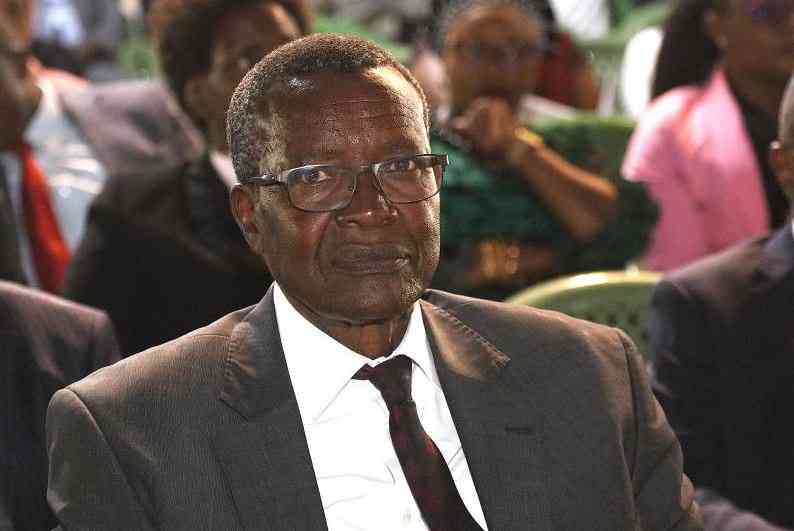With party primaries concluded, political temperatures will only rise in an unbeatable crescendo over the next couple of weeks, reaching fever pitch on August 8.
The race to constitute Kenya’s next government seems clearer, and the country is in the throes of political highs precipitating under-cutting deals, shenanigans and charade.
With this kind of atmosphere, it is usually difficult for politicians, analysts, campaign managers and election observers to stop, take stock and learn from experiences at every critical stage of the electoral process, with a view of precluding a repetition of past mistakes and ensure a credible outcome.
Which is why I want to take you back to the recently concluded party primaries, and consider a few provisional issues that might be important to anticipate now.
Two contrasting opinions by pundits emerged in the primaries. One view focused on the chaos and disorganisation of the primaries, and the other -- remarking at the number of incumbents who lost to newcomers or long-time rivals -- hailed the nominations as surprisingly democratic.
The argument of the former was that the shambolic primaries – as they were described by some – were a continuation of Kenya’s historical trouble with developing institutionalised and professionally-run political parties, while the argument of the latter, was that the power of Kenya’s dynastic families has been curtailed by new centres created by structural changes such as devolution.
Differences of opinion aside, all were in agreement that the high level of voter turn-out during the party primaries was remarkable. In other words, the loss of Kiambu County Woman Representative Anne Nyokabi to newcomer, Gathoni wa Muchomba, was not only remarkable due to the fact that Ms Nyokabi is Uhuru Kenyatta’s cousin, but also because Ms Gathoni won with 374,768 votes, one of the highest for any candidate nationally.
These arguments were largely convincing, but their lack of attention to the history of voter behaviour in Kenya meant analysts missed crucial lessons on elections and voter-behaviour. And this was not the first time historical analyses such as these were being made.
Political openness and voter turn-out
Firstly, there is a crucial point that observers of Kenyan elections have usually failed to make - the relationship between the level of a regime’s repressiveness and voter turn-out. Since the first universal franchise elections in 1961, Kenyans have always turned out to vote in high numbers when they believe they can determine the electoral outcome, a situation that obtains in a relatively open and therefore competitive political environment.
For instance, during the 1961 General Election, heightened political activity, which witnessed the formation of the first nation-wide political parties, KANU and KADU, combined with relative uncertainty about the outcome of the elections to produce a voter turn-out of 84 per cent. In 1963, with the same conditions of the previous two-years largely prevailing, 72 per cent of the registered voters turned out to vote. However, in 1969, the result was different. Only 47 per cent of the registered voters turned out to vote.
Between 1963 and 1969, a lot had happened. Pio Gama Pinto, Agwings Kodhek and Tom Mboya had been assassinated. The Kenya People’s Union (KPU), independent Kenya’s second opposition party, had been ruthlessly crushed and its leader, Jaramogi Odinga, was under house arrest. Simply, the 1969 elections had been preceded by independent Kenya’s first repressive inter-election period.
This pattern of high repression levels and low voter turn-out was repeated throughout Kanu’s regime. The most extreme example was in Mathare constituency during the 1983 elections, where only seven per cent of the registered voters turned out and where Josephat Karanja was declared winner, later to be appointed Vice President.
Nationally, only 48 per cent of the registered voters voted. Turn-out was lowest in urban areas, which have traditionally been zones of political opposition to the regime in power, and among younger voters. In fact, the outcomes of electoral contests in 1983 were highly predictable. Kanu was known to force unpopular individuals on voters, enabling cronies -- not popular candidates -- to have an easy way into Parliament or into the Cabinet, regardless of voter preferences. In fact, the outcomes of electoral contests in 1983 were highly predictable.
During the 1988 elections, the secret ballot was replaced with queue voting – mlolongo – during party primaries. Since Kanu was the only political party, failure to get its nomination certificate meant that one would have to suspend their political ambitions. As a result, many people refused to register in 1988, and turn-out in the primaries was extremely low. The number of registered voters fell by nearly 1.2 million compared to 1983.
Stay informed. Subscribe to our newsletter
This pattern begun to change in 1992, when the first multi-party elections since 1963 were conducted, and the political environment became relatively free – and Moi faced challengers for the presidency for the first time. Since 1992, voter turn-out has always been over 50 per cent -- (68 per cent in 1992, 64 in 1997, 57 in 2002, 69 in 2007 and 82 in 2013) -- and an average of 68 per cent.
It is therefore not surprising to see that many Kenyans turned out to vote in the recently concluded party primaries, as the political environment has remained relatively open, free and competitive compared to previous periods.
However, the existence of a relatively open political environment is not the only factor that can drive high voter turn-out figures. It is important to note that in elections where the voter turn-out is high, the likelihood for electoralviolence is also high, especially when the credibility of the polls is put under serious doubt.
Political patronage
The other crucial dynamic influencing voter behaviour in Kenya, which was also not mentioned in wide breadth by the analysts of the recent party primaries, is the role of patronage and the political mobilisation of ethnicity.
Voting in Kenya, as elsewhere, is about trust and kinship. And this is because voters are always distrustful of politicians, and will always suspect that politicians only seek personal enrichment, leading them to vote for those over whom they may extract a claim that goes beyond the ballot – a relative, a co-ethnic, someone who they know, or at least someone who is known to someone that they know.
Politicians are always expected not only to promise to be attentive to the communal and personal needs of voters, but also to offer evidence of their commitment to these demands. As a result, many voters more often than not come to the end of a campaign period with some personal stake: a relative running, or a politician who had promised to help their family with a job or a long-running legal dispute, or simply someone who had given them a sack of flour or a few hundred shillings.
Engaged in this kind of bargaining with politicians, voters will seek to extract both immediate returns in terms of money or other gifts, and longer-term promises of support, such as the sinking of a borehole. And the best option available for most voters to ensure that politicians don’t ‘forget them’ upon assuming office, is a form of kinship tie, in this case, ethnicity.
Expensive elections
As competitive, multi-party elections are becoming regularised in Kenya – and in Africa more widely – more money will be spent on elections and more people are going to be brought out to vote at every electoral cycle.
Which is why it is not surprising, that a number of incumbents lost in the party primaries.
Some analysts have attributed this to a new independence of political parties and presented these losses as a break with the past. However, Kenyans have historically voted out incumbents, even in not very open political environments.
During the 1969 General Election, five Cabinet Ministers and 14 out of 29 assistant ministers were rejected by the electorate. The change-over on the backbenches was even more dramatic. Only 27 of the 101 back-benchers in the 1963-9 Parliament won the elections.
Many had not worked sufficiently to ensure the flow of development to their constituents in a system that largely rested on that very foundation of state patronage.
In sum, elections in Kenya have always been referenda on the ability of incumbents to assist the development of their constituents, no matter how narrowly defined these may be.
In my view, these are the provisional lessons to be learnt from the party primaries, and the question to be asked, is whether the Independent Electoral and Boundaries Commission (IEBC) is prepared to effectively manage six electoral contests in 47 counties, under a context of rising political interest.
The writer is a PhD candidate at Durham University, United Kingdom
ngala.k.chome@gmail.com
 The Standard Group Plc is a
multi-media organization with investments in media platforms spanning newspaper
print operations, television, radio broadcasting, digital and online services. The
Standard Group is recognized as a leading multi-media house in Kenya with a key
influence in matters of national and international interest.
The Standard Group Plc is a
multi-media organization with investments in media platforms spanning newspaper
print operations, television, radio broadcasting, digital and online services. The
Standard Group is recognized as a leading multi-media house in Kenya with a key
influence in matters of national and international interest.
 The Standard Group Plc is a
multi-media organization with investments in media platforms spanning newspaper
print operations, television, radio broadcasting, digital and online services. The
Standard Group is recognized as a leading multi-media house in Kenya with a key
influence in matters of national and international interest.
The Standard Group Plc is a
multi-media organization with investments in media platforms spanning newspaper
print operations, television, radio broadcasting, digital and online services. The
Standard Group is recognized as a leading multi-media house in Kenya with a key
influence in matters of national and international interest.





